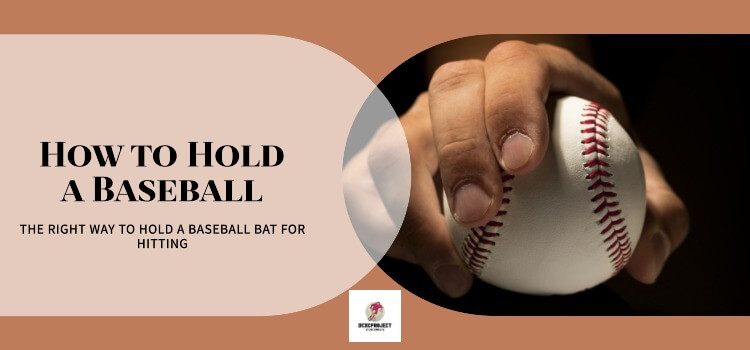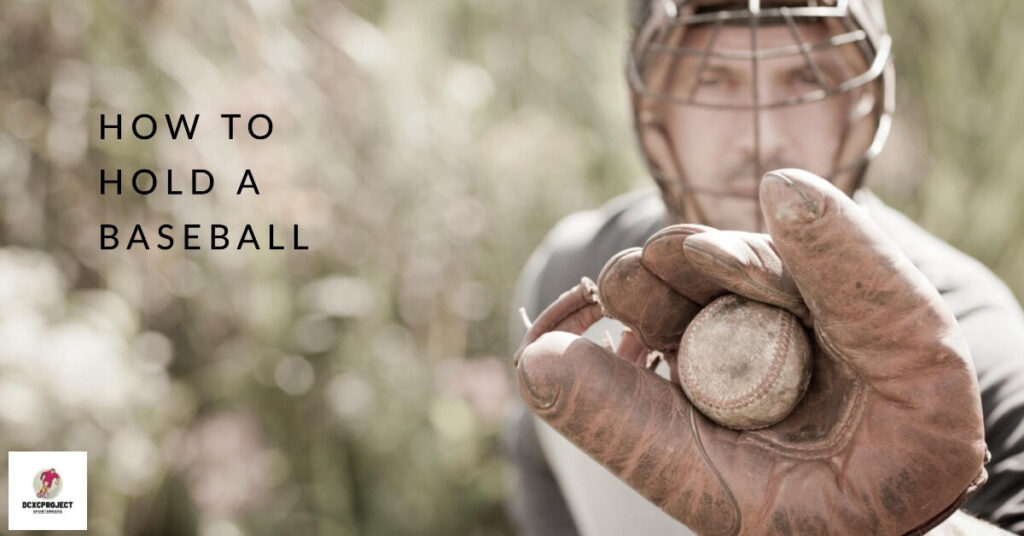Are you a baseball enthusiast looking to learn the fundamentals of holding a baseball? Whether you’re gearing up for your first Little League game or just want to improve your skills, mastering the art of holding a baseball is a crucial step. In this comprehensive guide, we’ll break down the basics of how to hold a baseball in a way that’s easy to understand, using simple language and practical advice. So, grab your glove, and let’s get started on the journey to becoming a pro at holding a baseball!
How to Hold a Baseball: Fundamental Guidelines
Before we get into the nitty-gritty details of various grips, let’s start with the basics. Holding a baseball may seem simple, but it’s the foundation of every pitch. You’ll need a baseball and a glove for practice.
Key Points:
- Hold the baseball with your fingertips, not your palm.
- Keep your thumb underneath the ball, supporting it.
- Find a comfortable grip that works for you.
Why Holding the Baseball Matters
You might wonder why the way you hold a baseball is so important. Well, it directly affects the trajectory and movement of the ball when you throw it. A proper grip can make your pitches faster, more accurate, and harder to hit.
Key Points:
- Grip influences the ball’s spin and path.
- Different grips create various types of pitches.
- Mastering grips gives you an edge as a pitcher.
The Four-Seam Grip: The Fundamentals
The four-seam grip is the go-to grip for many baseball players. It offers control and velocity, making it a staple for fastballs.
Key Points:
- Place your index and middle fingers across the seams.
- Maintain a firm grip without squeezing too tightly.
- Align your wrist to ensure a straight release.
The Two-Seam Grip: Adding Movement
If you want your pitch to move horizontally, the two-seam grip is your go-to. It’s great for inducing ground balls.
Key Points:
- Hold the ball with your index and middle fingers along the seams.
- Slightly tilt the ball to one side.
- Focus on a fluid, straight delivery for accuracy.
The Changeup Grip: Throwing Off Batters
Changeup pitches rely on deception, and the grip plays a crucial role in slowing down the ball’s speed.
Key Points:
- Use the same grip as the four-seam, but loosen your fingers.
- Concentrate on a smooth release and reduced arm speed.
- Keep batters guessing with your changeup.
The Curveball Grip: Adding Some Spin
For a curveball that breaks sharply, the grip and wrist action are essential.
Key Points:
- Position your middle finger on top of the ball’s seam.
- Create a curve by snapping your wrist downward.
- Practice the right spin for a sharp break.

The Slider Grip: A Tricky Pitch to Master
The slider is notorious for its late, sharp break, and the grip is vital for its success.
Key Points:
- Hold the ball with a tight, tilted grip.
- Focus on a quick, tight spin.
- Aim for the bottom outside corner of the strike zone.
The Knuckleball Grip: The Unpredictable Pitch
The knuckleball is one of the most unpredictable pitches, and the grip is unconventional.
Key Points:
- Place your fingertips on the seams with minimal pressure.
- Embrace the fluttering, unpredictable nature of this pitch.
- Mastery takes time and patience.
Common Mistakes to Avoid
As you work on your grip, watch out for these common mistakes that can affect your pitches.
Key Points:
- Avoid squeezing the ball too tightly.
- Don’t let your fingers slip off the seams.
- Maintain consistency in your grip.
Perfecting Your Grip: Tips and Tricks
To become a master at holding a baseball, consider these tips and tricks to enhance your skills.
Key Points:
- Practice regularly to build muscle memory.
- Seek guidance from experienced coaches.
- Experiment with different grips to find your sweet spot.
Practice Drills for Holding a Baseball
Enhance your grip and pitching skills with these practical drills.
Key Points:
- Finger strength exercises.
- Target practice with different grips.
- Consistent repetition is key.
The Mental Aspect of Holding a Baseball
Believe it or not, the mental aspect of holding a baseball is just as important as the physical grip. Confidence and focus are key.
Key Points:
- Visualization techniques for successful pitches.
- Stay calm under pressure.
- Trust your grip and abilities.
When to Use Different Grips
Knowing when to use different grips is essential for outsmarting batters. Understand the situations that call for specific pitches.
Key Points:
- Tailor your pitch selection to the batter’s weaknesses.
- Consider the game situation and count.
- Mix up your pitches to keep batters guessing.
Conclusion: Becoming a Confident Pitcher
Holding a baseball is the first step to becoming a successful pitcher. With dedication, practice, and the right grips, you can master the art of pitching and excel on the baseball field.

FAQs about Holding a Baseball
Q1: What’s the most common grip for beginners?
A1: The four-seam grip is a great starting point for beginners. It offers control and accuracy.
Q2: How long does it take to master different grips?
A2: Mastery varies from person to person, but consistent practice can lead to improvement in a matter of months.
Q3: Can I switch between grips during a game?
A3: Yes, pitchers often switch between grips to keep batters guessing and adapt to different situations.
Q4: What’s the best way to strengthen my fingers for a better grip?
A4: Finger exercises, such as squeezing a stress ball, can help strengthen your fingers over time.
Q5: Are there any professional pitchers known for their unique grips?
A5: Yes, pitchers like R.A. Dickey and Tim Wakefield gained fame for their mastery of the knuckleball

